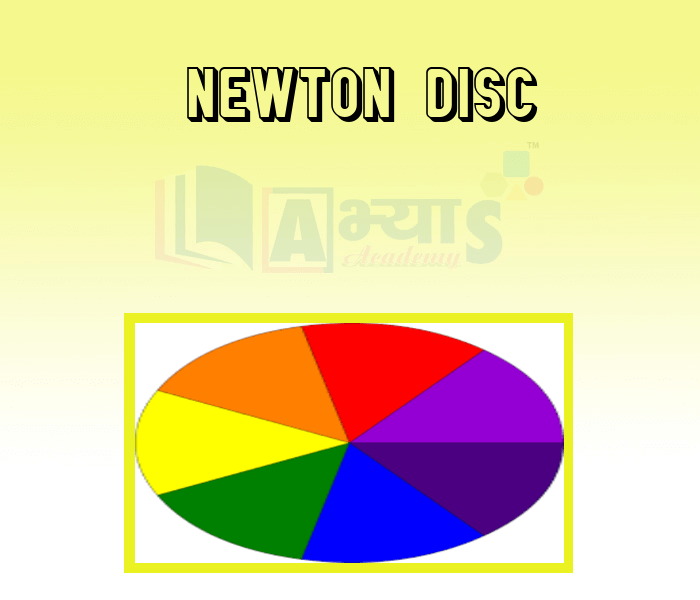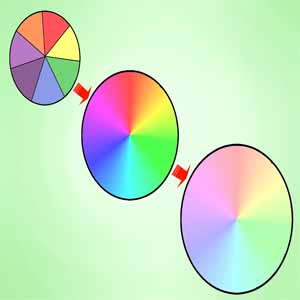Newton Disc












Newton Disc
Colours:
White light is composed of many colours .When these colour combine they look white. One way of showing that white light is composed of different colors is to make white light pass through a glass prism. This splits up the white light into its constituent colors. If you hold a screen in its path you will see band of colour this band of colours is s called the spectrum. As it’s visible to the human eye it is called the visible spectrum.
Newton’s Disc :
Newton’s disc is a colored disc which is painted with the colours of white light [i.e., violet, indigo, blue, green, yellow, orange, and red (VIBGYOR) in equal proportions so that when it is rotated very fast, the disc appears white. This is because of a property of our eyes called persistence of vision.

Which of the following are correct ? (a) To show that white light is composed of different colors it is to make white light pass through a glass prism. (b) If we hold a screen in the path of light coming out of a prism we will sea band of color this band of colors is s called the spectrum. | |||
| Right Option : C | |||
| View Explanation | |||
When white light is passed through prism , it splits into ______________ | |||
| Right Option : C | |||
| View Explanation | |||
Which of the following are correct / (a) To show that white light is composed of different colors is to make white light pass through a cardboard piece . (b) Prism splits up the white light into its constituent colors. (c) If we hold a screen in the path of light coming out of a prism we will see band of colour this band of colours is called the spectrum . | |||
| Right Option : B | |||
| View Explanation | |||
Students / Parents Reviews [10]
A marvelous experience with Abhyas. I am glad to share that my ward has achieved more than enough at the Ambala ABHYAS centre. Years have passed on and more and more he has gained. May the centre flourish and develop day by day by the grace of God.

Archit Segal
7thBeing a parent, I saw my daughter improvement in her studies by seeing a good result in all day to day compititive exam TMO, NSO, IEO etc and as well as studies. I have got a fruitful result from my daughter.

Prisha Gupta
8thMy experience with Abhyas academy is very good. I did not think that my every subject coming here will be so strong. The main thing is that the online tests had made me learn here more things.

Hiya Gupta
8thMy experience was very good with Abhyas academy. I am studying here from 6th class and I am satisfied by its results in my life. I improved a lot here ahead of school syllabus.

Ayan Ghosh
8thIt was good as the experience because as we had come here we had been improved in a such envirnment created here.Extra is taught which is beneficial for future.

Eshan Arora
8thOne of the best institutes to develope a child interest in studies.Provides SST and English knowledge also unlike other institutes. Teachers are co operative and friendly online tests andPPT develope practical knowledge also.

Aman Kumar Shrivastava
10thAbhyas is a complete education Institute. Here extreme care is taken by teacher with the help of regular exam. Extra classes also conducted by the institute, if the student is weak.

Om Umang
10thI have spent a wonderful time in Abhyas academy. It has made my reasoning more apt, English more stronger and Maths an interesting subject for me. It has given me a habbit of self studying

Yatharthi Sharma
10thAbhyas Methodology is very good. It is based on according to student and each child manages accordingly to its properly. Methodology has improved the abilities of students to shine them in future.

Manish Kumar
10thAbout Abhyas metholodology the teachers are very nice and hardworking toward students.The Centre Head Mrs Anu Sethi is also a brilliant teacher.Abhyas has taught me how to overcome problems and has always taken my doubts and suppoeted me.
